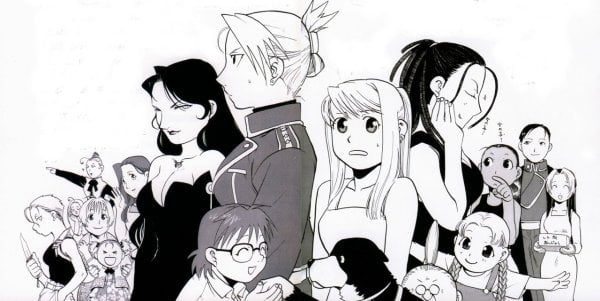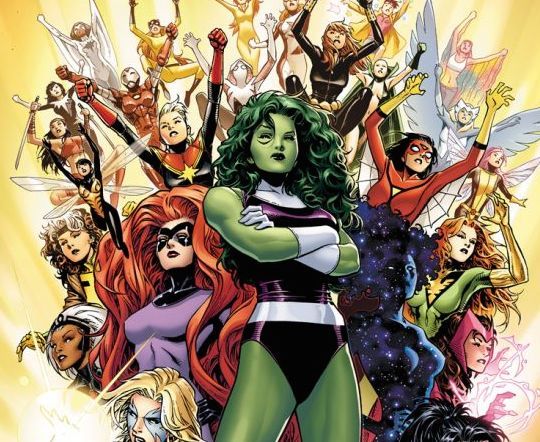Whenever I say the words anime, manga, superhero, fantasy, I am usually chucked out as an oddity. As a woman in her late thirties, a mother of two, it’s hard to find friends who share my interests. So it comes as no surprise when I find myself as the odd one out when it comes to the fandom of the superhero genre. I don’t fit into the general categories of kids, pre-teens, teens, grown men or superhero aficionados. Since its advent, the MCU (Marvel Cinematic Universe for the comic lingo-challenged) films saving the earth, the universe, other universes have become the pivotal talk for many on the internet. The reviews have been progressing in getting the spotlight on issues of gender, race, and diversity in representations.

The release of Captain Marvel on women’s day 2019, is the latest to foray into the bunch. As I watched the movie, the powerful scenes of the powerful female character, coincided with the ‘awes’ and ‘oohs’ among the audience. It was amazing because the whole movie was a goal-oriented superhero who saves the world and it was a woman. As someone who has been to numerous tried and tested story of ‘strong man saves the world’, it was amazing.

The sore point, on the whole, was the incessant trolling that Captain Marvel had to endure throughout the movie-making experience. She, in fact, had to share her work-out videos to cement her commitment to portraying the role (Well, it is 2019, sexists also have evolved, right!). I mean, we live in a world where violence is everywhere, but women are somehow not okay as fighters.
These rage-fuelled violent stunts Usually serve to advance the plot as an act of revenge or portray the hero as the Protector of the
heroine’s chastity.
A takeaway for me from Captain Marvel was the ‘catharsis’ I experienced. One of the available meanings of catharsis is the release of repressed emotions. I first heard the word during a lecture that described the impact of catharsis with relation to characters in a movie. Ironically, my professor was explaining the significance of fight scenes that are part and parcel of the masala genre movies. The classification of male protagonists as superheroes, ordinary people as under-dogs and their subsequent impact on the narrative was the point of the discussion. The elaborate fight sequences in movies often garner a lot of reactions. Specifically, these rage-fuelled violent stunts usually serve to advance the plot as an act of revenge, or portray the hero as the protector of the

The fight scenes had long savoured in these explanations, and in a way, it was nice – someone kicked an eve-teaser, castrated a rapist, thrashed a stalker and what not. Having grown in this environment of male fight scenes, the conspicuous absence of female characters during the discussions worries the present day ‘gender-sensitive me’. Though decades have bought about many changes towards proper representation, numbers still lag and are a long way from equality.
Also read: Captain Marvel: The Female Superhero We Deserve
While in many recent movies, there have been
While it is tragic that most movies fail the Bechdel test, the obvious lack of women in action roles add to the prevailing myth that women need protection and only men can be protectors.
One set is the Vijayashanti-
In the other end of the spectrum are movies that had female superheroes, action heroes. There are many movies that feature exclusive, female action-oriented movies but they simply cater to male audiences. These characters often conform to the male fantasy of women fighting, and hence it gets reflected in the way they look onscreen. With tight-fitted clothes and appearing nimble but not muscular, the female characters appear sexier than as real fighters. The eye-candy image of female actors spills over even when they are cast in action-

Thankfully, times changed and roles have also started to change. But still women fighting is sort of an anomaly on screen in many films. While it is tragic that most movies fail the Bechdel test, the obvious lack of women in action roles adds to the prevailing myth that women need protection and only men can be protectors. Women need not be ripped to fight, and depictions of strong women can help create a healthier gender-identity for a generation of young girls and boys.
Change is often the only constant, and many films, characters. and sequences do stand out, establishing women as fighters. In the various forms of media, women characters have emerged as warriors, fighters and action-figures. T
Also read: How Bollywood Horror Films Misrepresent Their Female Protagonists
Be it Arya Stark or Naachiyar, a powerful woman always has her own cult, and hopefully, Captain Marvel will be the forerunner towards more diverse representations of powerful characters.
Featured Image Source: Polygon
About the author(s)
A homemaker trying to wedge feminism into daily life. Ambica enjoys reading and is a news junkie. She loves political satire, especially by female comedians. Her other interests are films and plays.




